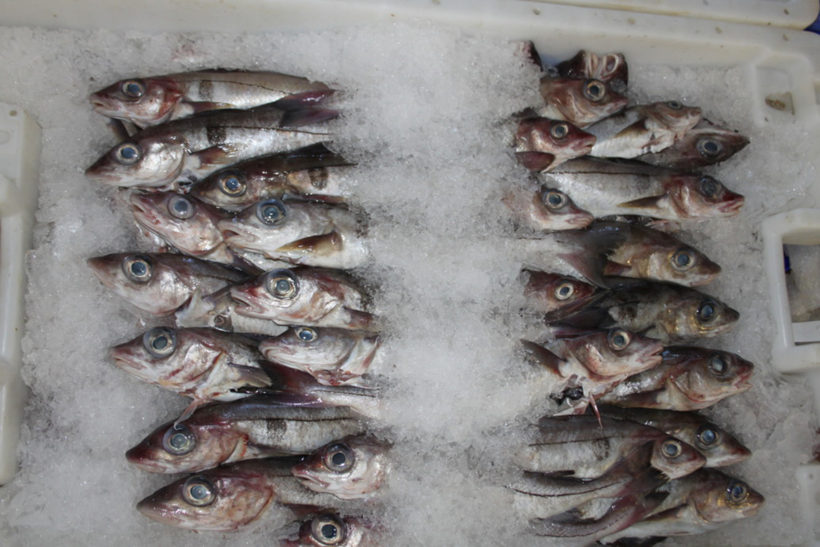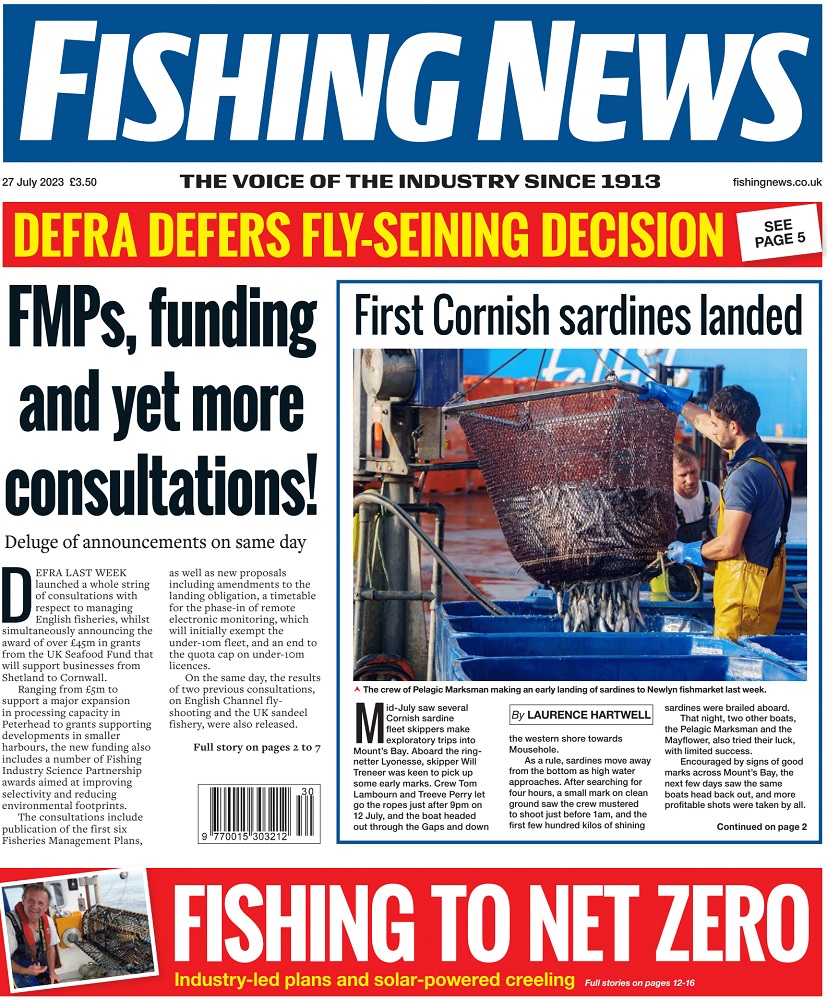The figures are now well-known across the industry, but three months ago, very few people realised how dependent the UK – the catering trade in particular – is on Russian fish, reports Andy Read.
Knee-jerk announcements by politicians make great headlines. It is unlikely, however, that the chancellor realised the full implications of his announcement about the imposition of tariffs on Russian fish for the catering sector. This tariff is, in reality, almost impossible to impose on fish that is regularly reprocessed and relabelled. In the case of Faroese whitefish entering the UK, it is caught by Faroese vessels in exchange for permission for Russian vessels to fish in the shared UK/Faroe zone for pelagic fish.
Without alternatives, a successful imposition of tariffs would, as one writer here shows, have a huge and negative impact on the fish and chip shop trade. Alternatives are there, but a sector struggling with record price increases and customers facing a financial squeeze will need time and support to adjust.
A more effective – and as articles in this feature explain, financially attractive – way forward for the UK may be to find a way to replace the huge volume of imported whitefish with alternative products, caught and processed in the UK.
Fishing News is grateful to the writers here, who we hope are starting a wider debate across the entire fisheries value chain about ways in which the UK can adapt to the new reality, and address our dependence on imported fish.
Four-point plan for Scotland to plug the Russian gap

Jimmy Buchan: “There is a huge opportunity for us to create a sea change in our national seafood diet, to the benefit of everyone.”
Here, Scottish Seafood Association (SSA) CEO Jimmy Buchan points out that the huge quantity of haddock being seen on the grounds creates a massive opportunity for Scottish fishermen and processors to increase domestic production – if processors can be supported to recruit and train the staff needed.
With skippers reporting very high catch rates for haddock, close to port, it is the current prices for the smallest grades, particularly when large landings are made, that are deterring skippers from the fishery.
One salesman on Peterhead market told FN: “The fish is there, but skippers know that the prices posted on the market, when landings are light, very quickly fall away if the volume increases. There simply isn’t the processing capacity now to take large volumes of these smaller size classes.”
“With government supporting our vision, we can do this!” was Jimmy Buchan’s opening salvo when Fishing News contacted him to discuss the plans that the Scottish Seafood Association has for a future in which imports of Russian whitefish are phased out.
It was a great place to start. Whilst the figures of 40% of our UK whitefish consumption being Russian, rising to 70% in the catering trade, and with loopholes left, right and centre for Russian fish to avoid the promised 35% tariffs, are well known, the blueprint for increasing UK production has been much less widely discussed.
“Here in Scotland, we have a huge opportunity to address the imbalance of trade in whitefish, creating jobs ashore, supplying extra income to our whitefish fleet and improving the UK’s balance of payments,” Jimmy Buchan went on to explain.
“In the longer term, there is without a doubt going to be a move towards automation in the sector, greatly increasing productivity of the processing sector. But we need successful, volume business to help finance this, as the technology becomes available – which it certainly will.
“We need the government to share our vision, and to create the enabling environment to make this huge change, and wean the country off its addiction to Russian fish.
“Firstly, we need to accept and address the fact that a combination of Covid and Brexit have spelled disaster for staffing levels in the processing sector. We could create 1,000 new processing jobs across the Scottish sector in the next 12 months, if government can create the right visa scheme. The people will take time to train and provide skills, to build up the productivity we need to be truly competitive.
“The great news is that we have the fish available to do this! The second step is to enable this fish to be used.
“Whitefish vessels around the ports are all reporting a great year-class of haddock. At the moment, our costs involved in processing this year-class are such that for many boats, it is not worth fishing for it, and they are instead concentrating on higher- value species elsewhere. If we don’t increase and upskill our workforce, this fish will remain uncaught, and the income will be lost to the catching sector.
“This run of small haddock – and scientists tell us they are very fast-growing due to warmer water, but reach a much smaller maximum size, so this size-class is here to stay – produces fillets of around half the ‘traditional’ fish and chip shop size of 160g. The next step is to explain to consumers that the days of landing larger, colder-water fish are over for many boats, and that this is the new reality.
“Support with this messaging, plus the fact that UK vessels work to better quality control, health and safety and sustainability rules than Russian vessels, is a vital additional step that all sectors – from the vessels all the way to our fish and chip shops – will benefit from.
“This goes hand in hand with the right quota availability for other species that can also be used, such as whiting and saithe. We need the government to take a five-, 10- and 15-year view on this, and to make it a priority to increase our quota shares for species that can replace our reliance on imported fish. This is a food security issue as much as anything else, and the government should recognise this.
“Worldwide, the cost of food production is going through the roof, due not just to fuel prices, but knock-on increases in animal feed and fertilisers. In theory, fisheries should be less affected – we don’t feed our fish. Fuel costs for the catching sector and staff costs for the processing sector are our main expenses, but we are much less vulnerable to these shocks than most food sectors.
“Again, we need recognition of this from government, and support to develop a detailed plan, based on these four steps:
- Recruitment and upskilling
- Investment in new technology
- Access to fish stocks
- Messaging to consumers and retailers.
“This could see the UK return to the days when it could meet our demand for the great British fish and chips – whilst improving employment ashore and at sea, reducing costs and vulnerability for our chip shop trade, and allowing us to put a stop to imported Russian fish, confirmed as the second-worst IUU fishing nation in the world.
“There is a huge opportunity here for us to create a once-in-a-generation sea change in our national seafood diet, to the benefit of everyone. At the Scottish Seafood Association, we hope that everyone involved can embrace this opportunity to take this step together.
“Without question, it needs government to share our vision, and our excitement about this opportunity. We very much welcome discussing the detail of this with politicians, and our friends and colleagues across the catching and catering sectors.”
This story was taken from the latest issue of Fishing News. For more up-to-date and in-depth reports on the UK and Irish commercial fishing sector, subscribe to Fishing News here or buy the latest single issue for just £3.30 here.
Read another article from our ‘Ways To Wean The UK Off Its Russian Fish Habit’ here.






